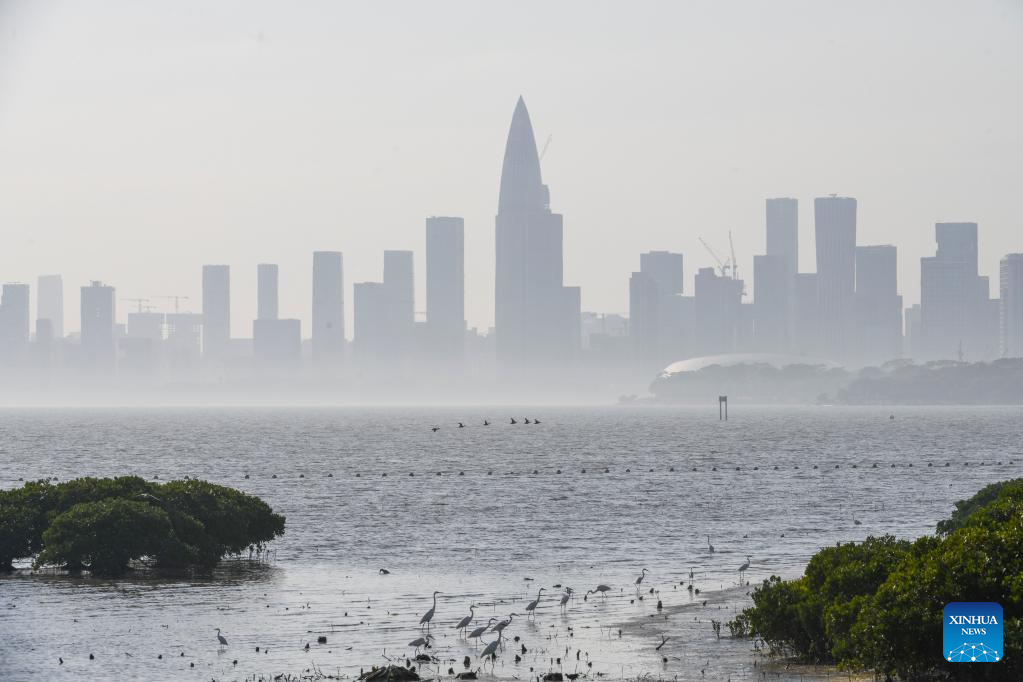
Birds are observed at a mangrove wetland in Futian, Shenzhen, south China's Guangdong Province, Feb. 1, 2023. By 2035, Shenzhen will strive to achieve a 50 percent wetland protection rate, maintain a stable wetland area, effectively improve the ecological status of coastal wetlands, optimize the quality of wetland ecological space in built-up areas, and build itself into an international wetland city.
People in this city of scientific and technological innovation are deeply in awe of nature, cherishing and carefully protecting its mangrove wetlands and maintaining international migration routes for migratory birds. (Xinhua/Liang Xu)

Birds are observed at a mangrove wetland in Futian, Shenzhen, south China's Guangdong Province, Feb. 1, 2023. By 2035, Shenzhen will strive to achieve a 50 percent wetland protection rate, maintain a stable wetland area, effectively improve the ecological status of coastal wetlands, optimize the quality of wetland ecological space in built-up areas, and build itself into an international wetland city.
People in this city of scientific and technological innovation are deeply in awe of nature, cherishing and carefully protecting its mangrove wetlands and maintaining international migration routes for migratory birds. (Xinhua/Liang Xu)
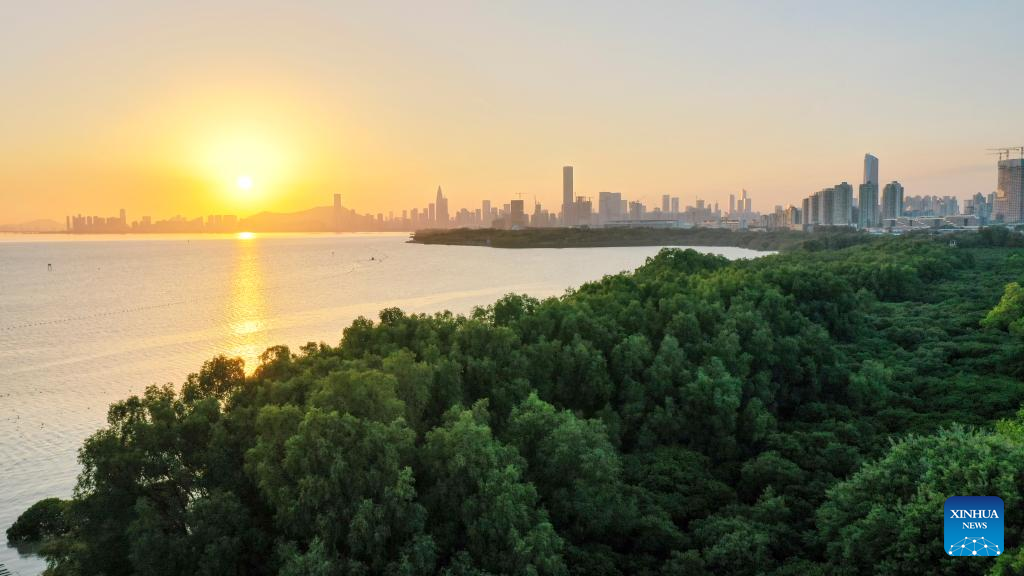
This aerial photo taken on Feb. 1, 2023 shows the view of a mangrove wetland in Futian National Nature Reserve in Shenzhen, south China's Guangdong Province. By 2035, Shenzhen will strive to achieve a 50 percent wetland protection rate, maintain a stable wetland area, effectively improve the ecological status of coastal wetlands, optimize the quality of wetland ecological space in built-up areas, and build itself into an international wetland city.
People in this city of scientific and technological innovation are deeply in awe of nature, cherishing and carefully protecting its mangrove wetlands and maintaining international migration routes for migratory birds. (Xinhua/Liang Xu)

Eurasian wigeons are observed at a mangrove wetland in Futian, Shenzhen, south China's Guangdong Province, Nov. 11, 2022. By 2035, Shenzhen will strive to achieve a 50 percent wetland protection rate, maintain a stable wetland area, effectively improve the ecological status of coastal wetlands, optimize the quality of wetland ecological space in built-up areas, and build itself into an international wetland city.
People in this city of scientific and technological innovation are deeply in awe of nature, cherishing and carefully protecting its mangrove wetlands and maintaining international migration routes for migratory birds. (Xinhua/Liang Xu)
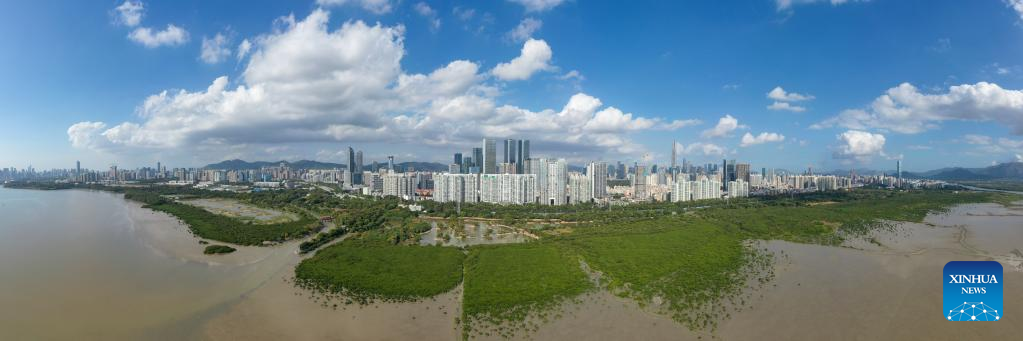
This aerial panorama photo taken on Feb. 1, 2023 shows the view of Futian National Nature Reserve in Shenzhen, south China's Guangdong Province. By 2035, Shenzhen will strive to achieve a 50 percent wetland protection rate, maintain a stable wetland area, effectively improve the ecological status of coastal wetlands, optimize the quality of wetland ecological space in built-up areas, and build itself into an international wetland city.
People in this city of scientific and technological innovation are deeply in awe of nature, cherishing and carefully protecting its mangrove wetlands and maintaining international migration routes for migratory birds. (Xinhua/Liang Xu)
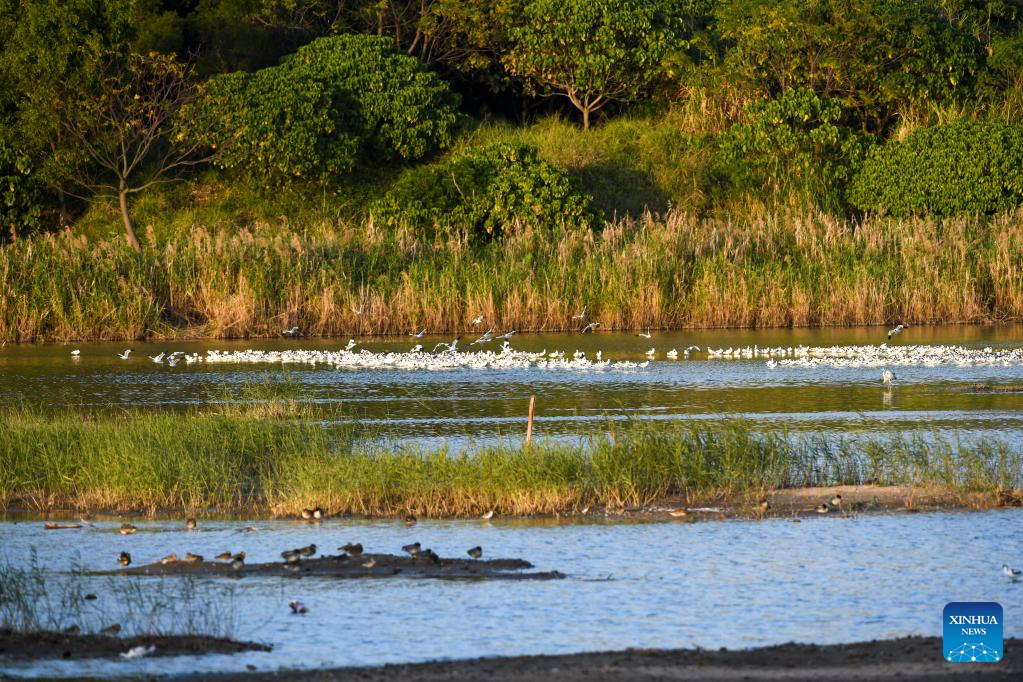
Birds are observed at a mangrove wetland in Futian, Shenzhen, south China's Guangdong Province, Feb. 1, 2023. By 2035, Shenzhen will strive to achieve a 50 percent wetland protection rate, maintain a stable wetland area, effectively improve the ecological status of coastal wetlands, optimize the quality of wetland ecological space in built-up areas, and build itself into an international wetland city.
People in this city of scientific and technological innovation are deeply in awe of nature, cherishing and carefully protecting its mangrove wetlands and maintaining international migration routes for migratory birds. (Xinhua/Liang Xu)

Birds are observed at a mangrove wetland in Futian, Shenzhen, south China's Guangdong Province, Nov. 11, 2022. By 2035, Shenzhen will strive to achieve a 50 percent wetland protection rate, maintain a stable wetland area, effectively improve the ecological status of coastal wetlands, optimize the quality of wetland ecological space in built-up areas, and build itself into an international wetland city.
People in this city of scientific and technological innovation are deeply in awe of nature, cherishing and carefully protecting its mangrove wetlands and maintaining international migration routes for migratory birds. (Xinhua/Liang Xu)
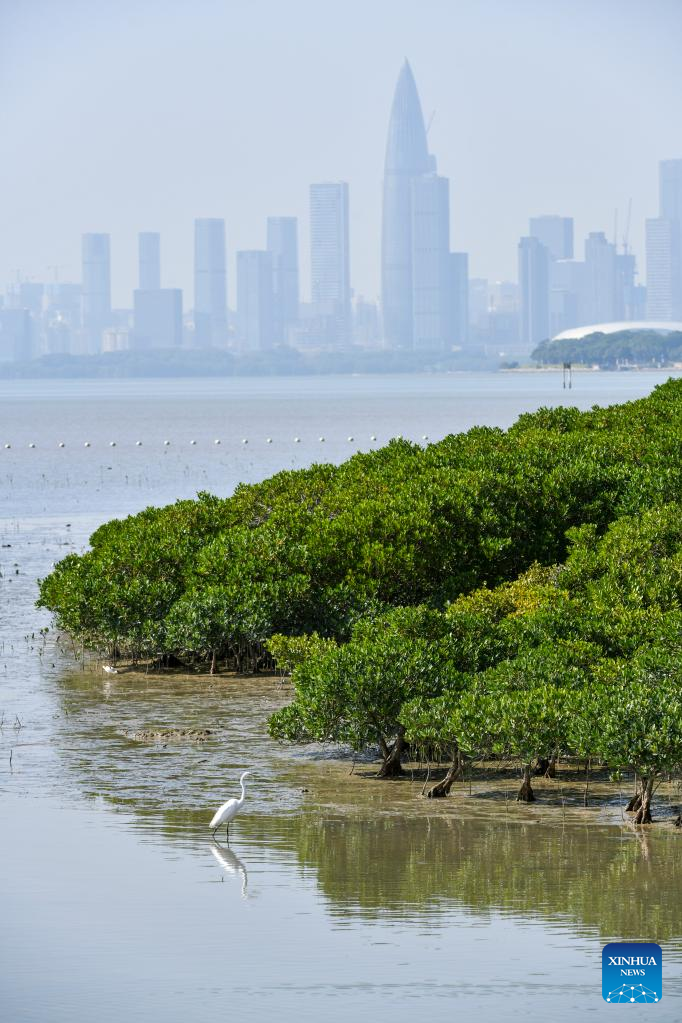
Birds are observed at a mangrove wetland in Futian, Shenzhen, south China's Guangdong Province, Dec. 7, 2022. By 2035, Shenzhen will strive to achieve a 50 percent wetland protection rate, maintain a stable wetland area, effectively improve the ecological status of coastal wetlands, optimize the quality of wetland ecological space in built-up areas, and build itself into an international wetland city.
People in this city of scientific and technological innovation are deeply in awe of nature, cherishing and carefully protecting its mangrove wetlands and maintaining international migration routes for migratory birds. (Xinhua/Liang Xu)
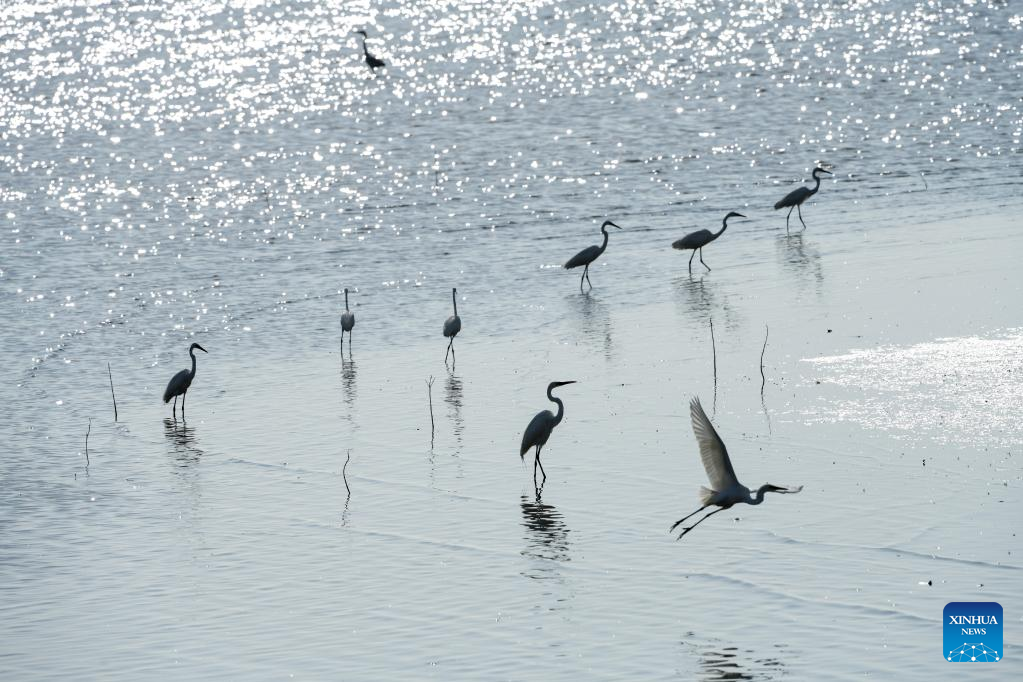
Birds are observed at a mangrove wetland in Futian, Shenzhen, south China's Guangdong Province, Feb. 1, 2023. By 2035, Shenzhen will strive to achieve a 50 percent wetland protection rate, maintain a stable wetland area, effectively improve the ecological status of coastal wetlands, optimize the quality of wetland ecological space in built-up areas, and build itself into an international wetland city.
People in this city of scientific and technological innovation are deeply in awe of nature, cherishing and carefully protecting its mangrove wetlands and maintaining international migration routes for migratory birds. (Xinhua/Liang Xu)
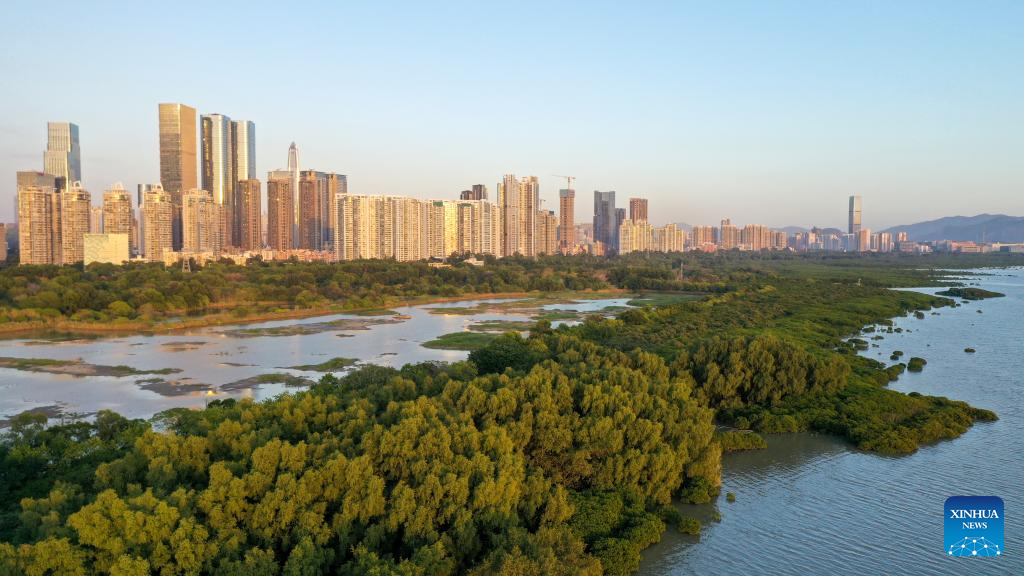
This aerial photo taken on Feb. 1, 2023 shows the view of a mangrove wetland in Futian National Nature Reserve in Shenzhen, south China's Guangdong Province. By 2035, Shenzhen will strive to achieve a 50 percent wetland protection rate, maintain a stable wetland area, effectively improve the ecological status of coastal wetlands, optimize the quality of wetland ecological space in built-up areas, and build itself into an international wetland city.
People in this city of scientific and technological innovation are deeply in awe of nature, cherishing and carefully protecting its mangrove wetlands and maintaining international migration routes for migratory birds. (Xinhua/Liang Xu)
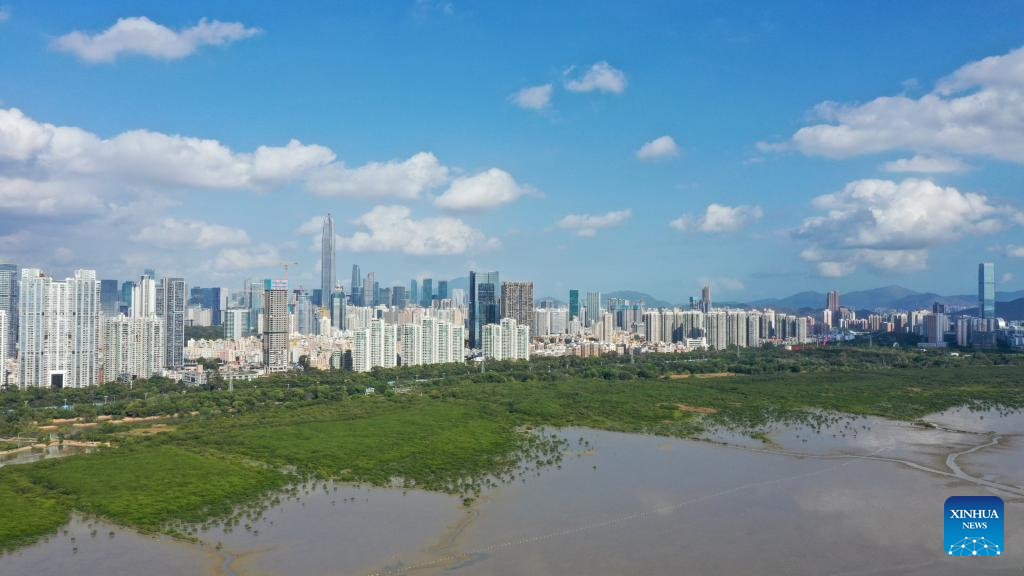
This aerial photo taken on Feb. 1, 2023 shows the view of a mangrove wetland in Futian National Nature Reserve in Shenzhen, south China's Guangdong Province. By 2035, Shenzhen will strive to achieve a 50 percent wetland protection rate, maintain a stable wetland area, effectively improve the ecological status of coastal wetlands, optimize the quality of wetland ecological space in built-up areas, and build itself into an international wetland city.
People in this city of scientific and technological innovation are deeply in awe of nature, cherishing and carefully protecting its mangrove wetlands and maintaining international migration routes for migratory birds. (Xinhua/Liang Xu)

A black-faced spoonbill forages at a mangrove wetland in Futian, Shenzhen, south China's Guangdong Province, Feb. 1, 2023. By 2035, Shenzhen will strive to achieve a 50 percent wetland protection rate, maintain a stable wetland area, effectively improve the ecological status of coastal wetlands, optimize the quality of wetland ecological space in built-up areas, and build itself into an international wetland city.
People in this city of scientific and technological innovation are deeply in awe of nature, cherishing and carefully protecting its mangrove wetlands and maintaining international migration routes for migratory birds. (Xinhua/Liang Xu)

Black-faced spoonbills forage at a mangrove wetland in Futian, Shenzhen, south China's Guangdong Province, Feb. 1, 2023. By 2035, Shenzhen will strive to achieve a 50 percent wetland protection rate, maintain a stable wetland area, effectively improve the ecological status of coastal wetlands, optimize the quality of wetland ecological space in built-up areas, and build itself into an international wetland city.
People in this city of scientific and technological innovation are deeply in awe of nature, cherishing and carefully protecting its mangrove wetlands and maintaining international migration routes for migratory birds. (Xinhua/Liang Xu)
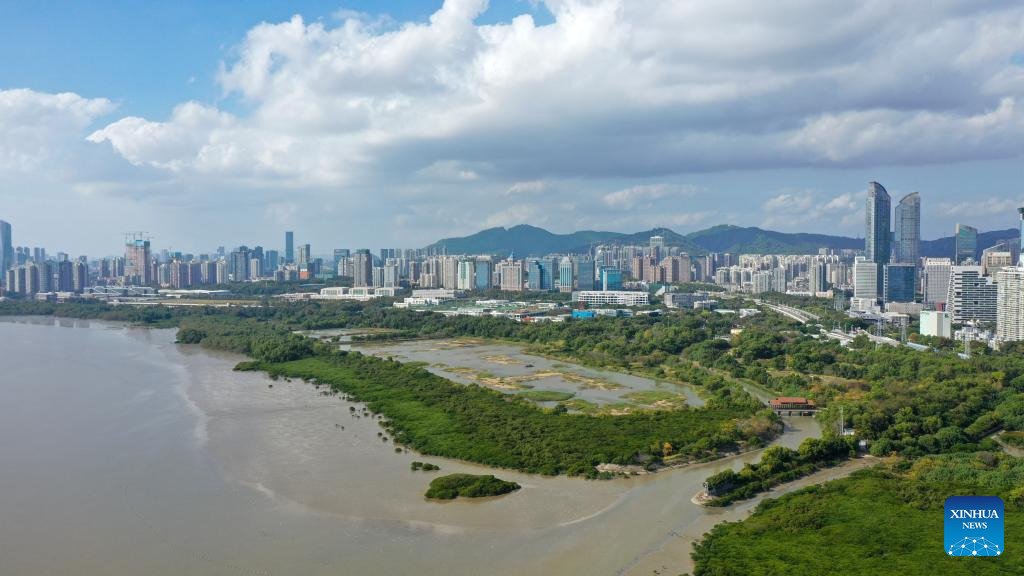
This aerial photo taken on Feb. 1, 2023 shows the view of a mangrove wetland in Futian National Nature Reserve in Shenzhen, south China's Guangdong Province. By 2035, Shenzhen will strive to achieve a 50 percent wetland protection rate, maintain a stable wetland area, effectively improve the ecological status of coastal wetlands, optimize the quality of wetland ecological space in built-up areas, and build itself into an international wetland city.
People in this city of scientific and technological innovation are deeply in awe of nature, cherishing and carefully protecting its mangrove wetlands and maintaining international migration routes for migratory birds. (Xinhua/Liang Xu)
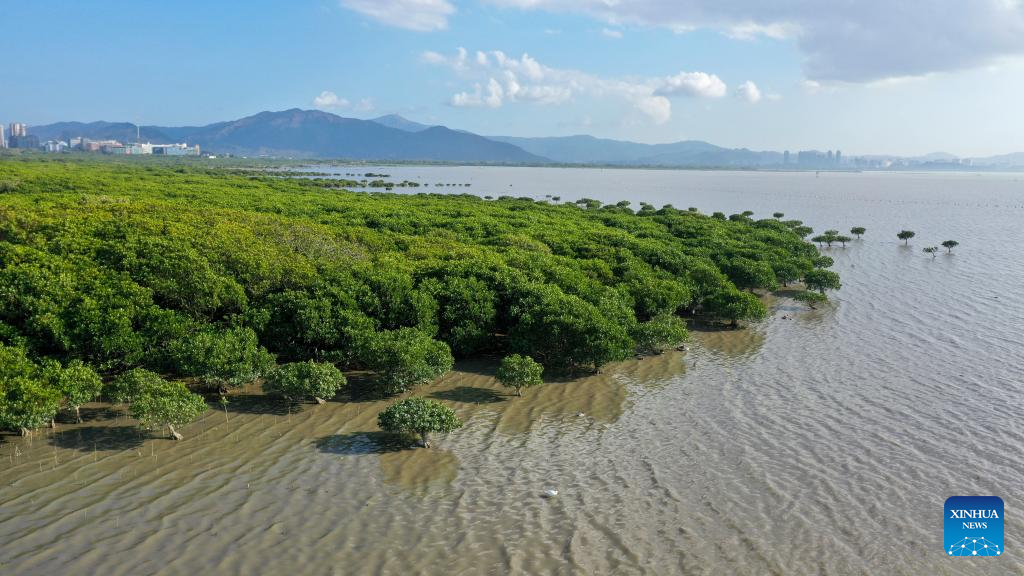
This aerial photo taken on Feb. 1, 2023 shows the view of a mangrove wetland in Futian National Nature Reserve in Shenzhen, south China's Guangdong Province. By 2035, Shenzhen will strive to achieve a 50 percent wetland protection rate, maintain a stable wetland area, effectively improve the ecological status of coastal wetlands, optimize the quality of wetland ecological space in built-up areas, and build itself into an international wetland city.
People in this city of scientific and technological innovation are deeply in awe of nature, cherishing and carefully protecting its mangrove wetlands and maintaining international migration routes for migratory birds. (Xinhua/Liang Xu)
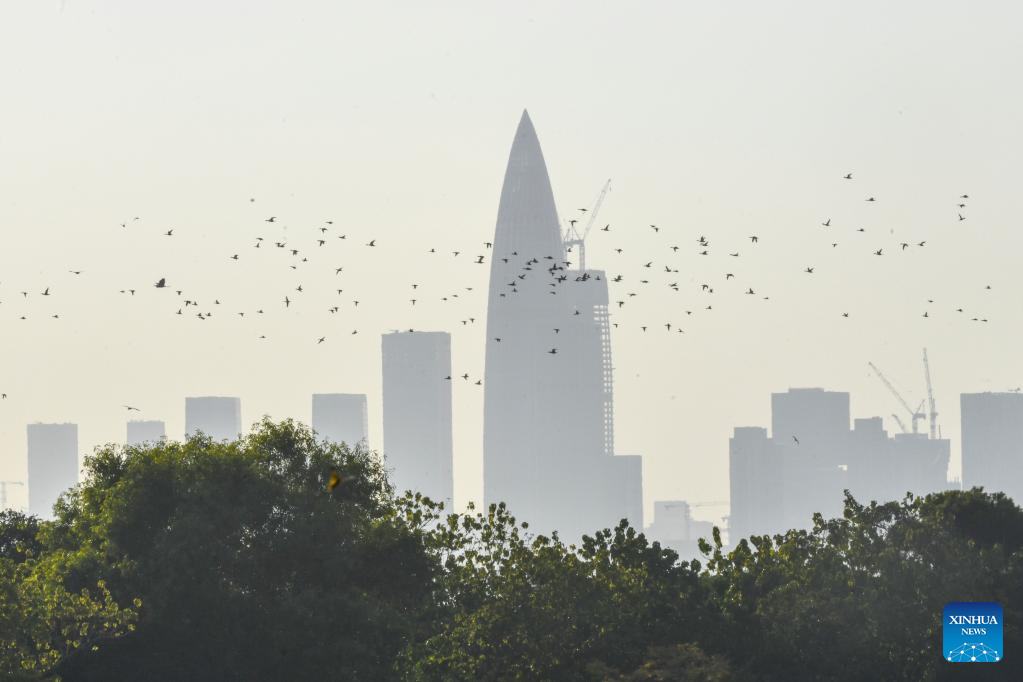
Birds fly over a mangrove wetland in Futian, Shenzhen, south China's Guangdong Province, Feb. 1, 2023. By 2035, Shenzhen will strive to achieve a 50 percent wetland protection rate, maintain a stable wetland area, effectively improve the ecological status of coastal wetlands, optimize the quality of wetland ecological space in built-up areas, and build itself into an international wetland city.
People in this city of scientific and technological innovation are deeply in awe of nature, cherishing and carefully protecting its mangrove wetlands and maintaining international migration routes for migratory birds. (Xinhua/Liang Xu)



